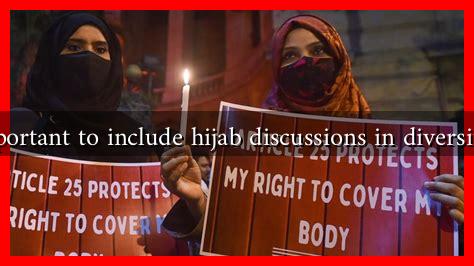-
Table of Contents
Why is it Important to Include Hijab Discussions in Diversity Initiatives?
In an increasingly globalized world, diversity initiatives have become essential for fostering inclusive environments in workplaces, educational institutions, and communities. One often overlooked aspect of diversity discussions is the hijab, a traditional headscarf worn by many Muslim women. Including hijab discussions in diversity initiatives is crucial for several reasons, including promoting understanding, combating stereotypes, and enhancing workplace culture.
Understanding Cultural Significance
The hijab is not merely a piece of clothing; it carries deep cultural and religious significance for many Muslim women. Understanding this significance is vital for fostering an inclusive environment. Here are some key points to consider:
- Religious Identity: For many Muslim women, wearing the hijab is an expression of their faith and identity. It symbolizes modesty and devotion.
- Cultural Heritage: The hijab is part of a broader cultural heritage that varies across different regions and communities, reflecting diverse interpretations and practices.
- Personal Choice: While some women choose to wear the hijab, others may not. Respecting individual choices is essential for promoting a culture of acceptance.
Combating Stereotypes and Misconceptions
Discussions about the hijab can help dismantle harmful stereotypes and misconceptions that often surround it. Many people associate the hijab with oppression or backwardness, failing to recognize the agency of women who choose to wear it. By including hijab discussions in diversity initiatives, organizations can:
- Educate Employees: Providing educational resources about the hijab can help dispel myths and foster a more nuanced understanding of its significance.
- Encourage Dialogue: Creating safe spaces for open discussions allows individuals to share their experiences and perspectives, promoting empathy and understanding.
- Highlight Diversity Within Diversity: Recognizing that there are various ways to express identity within the Muslim community can enrich the overall diversity narrative.
Enhancing Workplace Culture
Incorporating hijab discussions into diversity initiatives can significantly enhance workplace culture. A more inclusive environment leads to numerous benefits, including:
- Increased Employee Engagement: Employees who feel respected and valued are more likely to be engaged and productive.
- Attracting Talent: Organizations that prioritize diversity and inclusion are more attractive to a broader talent pool, including skilled Muslim professionals.
- Improved Team Dynamics: Diverse teams bring varied perspectives, leading to more innovative solutions and better decision-making.
Case Studies and Real-World Examples
Several organizations have successfully integrated hijab discussions into their diversity initiatives, yielding positive outcomes:
- Accenture: The consulting firm has implemented training programs that include discussions on cultural attire, including the hijab, to foster understanding among employees.
- Starbucks: The coffee giant has made headlines for its inclusive policies, allowing employees to wear religious attire, including hijabs, as part of their uniform.
- Google: Google has hosted events and panels focusing on Muslim women’s experiences in the tech industry, promoting dialogue and understanding.
Statistics Supporting Inclusion
Research indicates that diversity initiatives that include discussions on cultural attire can lead to measurable benefits:
- A study by McKinsey found that companies in the top quartile for gender diversity on executive teams were 21% more likely to outperform on profitability.
- According to a report by Deloitte, inclusive companies are 1.7 times more likely to be innovation leaders in their market.
Conclusion
Incorporating hijab discussions into diversity initiatives is not just a matter of political correctness; it is essential for fostering understanding, combating stereotypes, and enhancing workplace culture. By recognizing the cultural significance of the hijab, organizations can create more inclusive environments that respect individual choices and promote dialogue. As we move towards a more diverse future, it is imperative that we embrace all aspects of identity, including the hijab, to build a more equitable society.
For further reading on diversity and inclusion, you can explore resources from the Diversity Best Practices.




